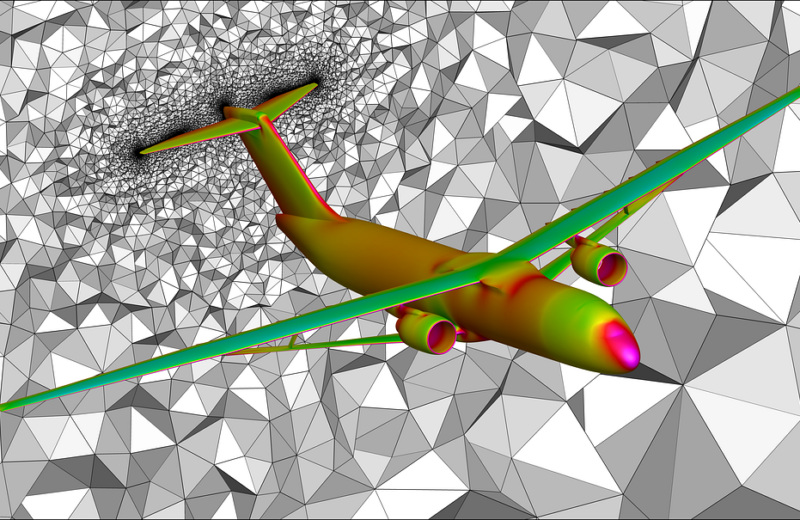X-66A: NASA and Boeing demonstrator gets Air Force designation

A digital rendering of the Transonic Truss-Braced Wing concept, created using data from a simulation using computational fluid dynamics. (credit:NASA)
The US Air Force has designated Boeing and NASA’s sustainable flight demonstrator project as the X-66A.
The abnormally long, thin-winged aircraft which uses diagonal struts as stabilisers for the wings – known as a Transonic Truss-Braced Wing concept – will be built and flown by Boeing and NASA. With the programme due to begin in 2028, the data harvested from testing the ‘X-plane’ will feed into improving the design of more sustainable single-aisle aircraft – the “workhorse” of passenger airlines around the world. The X-66A is the first X-plane specifically focused on helping the US achieve its 2050 domestic net-zero aviation greenhouse gas emissions targets.
“To reach our goal of net zero aviation emissions by 2050, we need transformative aircraft concepts like the ones we’re flying on the X-66A,” said Bob Pearce, associate administrator for NASA’s Aeronautics Research Mission Directorate, who announced the designation at the American Institute of Aeronautics and Astronautics Aviation Forum in San Diego. “With this experimental aircraft, we’re aiming high to demonstrate the kinds of energy-saving, emissions-reducing technologies the aviation industry needs.”
NASA and Boeing began working towards the X-plane designation shortly after they announced the demonstrator project award earlier this year. The Air Force gives X-plane status to programmes that set out to “create revolutionary experimental aircraft configurations”. The designation is for research aircraft. For the X-66A, the USAF gave the designation for validation of a Transonic Truss-Braced Wing configuration. According to NASA, when combined with other advancements in propulsion systems, materials, and systems architecture, could result in up to 30% less fuel consumption and reduced emissions compared with aircraft flying today. Due to their heavy usage, single-aisle aircraft today account for nearly half of worldwide aviation emissions.

NASA Administrator Bill Nelson, said: “At NASA, our eyes are not just focused on stars but also fixated on the sky. The Sustainable Flight Demonstrator builds on NASA’s world-leading efforts in aeronautics as well climate. The X-66A will help shape the future of aviation, a new era where aircraft are greener, cleaner, and quieter, and create new possibilities for the flying public and American industry alike.”
NASA has a Funded Space Act Agreement with Boeing which will see the agency invest $425m over seven years in the project. While Boeing and its partners will contribute the remainder of the funding, estimated at about $725m.
Todd Citron, Boeing’s chief technology officer, said: “We’re incredibly proud of this designation, because it means that the X-66A will be the next in a long line of experimental aircraft used to validate breakthrough designs that have transformed aviation. With the learnings gained from design, construction, and flight-testing, we’ll have an opportunity to shape the future of flight and contribute to the decarbonisation of aerospace.”






